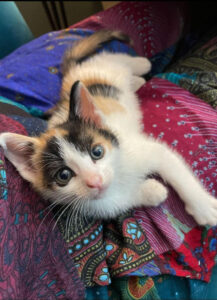 Judging by the headline, you might assume this column is a follow-up to my tripping-over-the-dog mishap from a couple of months ago. That accident broke my eyeglasses and my nose. Worst of all, for the first couple of minutes after I fell, I was pretty sure I was going to bleed to death before help arrived.
Judging by the headline, you might assume this column is a follow-up to my tripping-over-the-dog mishap from a couple of months ago. That accident broke my eyeglasses and my nose. Worst of all, for the first couple of minutes after I fell, I was pretty sure I was going to bleed to death before help arrived.
But I’m not writing about that.
And I’m not focusing on how my e-mail and social media feeds are suddenly filled with posts about lost dogs. On any given day, dozens—or maybe hundreds—of dogs in our neck of the woods are not at home where they belong. Some end up at animal shelters. A few are reunited with their owners. Sadly, many are found dead in the road.
I’m not writing about those things because, while immersed in internet research, I stumbled upon this: KITTEN SEASON IS UPON US. Along with that headline and accompanying story were photos of adorable kittens in all sizes, shapes and colors. Happy news, right? Not really. The story pointed out that, as the weather warms, non-sterilized female cats go into heat. This can begin when they are only four months old. It goes on for years. Many of these fertile cats run loose and are quickly discovered by non-sterilized male cats, who will mate with as many females as possible as often as possible.
Resulting in lots and lots and lots of kittens.
I saw it happen first-hand when I lived on a farm. Our barn was dry and filled with hay and mice. Year after year, pregnant cats showed up there. We fed them friskies to supplement the rodents and tried to gentle them. After the kittens were born and weaned, straight to the vet’s office mamas and babies would go to be spayed or neutered. Then we did our best to find the kittens good homes. Favorite trick? “Barn parties,” to which my kids invited lots of friends. I’d serve lemonade and vanilla wafers and send the friends whose parents would allow it home with a cute-and-cuddly party favor or two. We kept as farm cats the kittens we couldn’t give away.
Most kittens born into this hard world aren’t so lucky. They die of starvation or exposure. They’re shot or drowned or killed by predators or hit by cars. Those who somehow manage to survive continue to propagate.
All of which is to say that kitten season being upon us isn’t good news. How can concerned humans help? We can donate cat and kitten food and/or kitty litter to animal shelters. (Even easier, donate money.) Volunteer at shelters. Foster cats and/or kittens until they find forever homes. (Shelters are sometimes so overrun with animals that they can’t accept any more.) Adopt a grown cat or kitten. (And remember that a kitten’s favorite toy is another kitten. Go ahead and get two.)
My son James was the “cat kid” in our family. He loved cats and kittens more than dogs and horses and goats and chickens and ducks combined. Now, James and his wife and daughters foster cats and kittens in their home. Sadly, their first foster was too frail to survive. Another—“Polly Pocket”—was so endearing they adopted her. (Her picture accompanies this column on Facebook.)The others are fed and sheltered and loved until they find a “furever” family.
Unfortunately, shelters and foster homes scarcely make a dent in the disaster of animal overpopulation. Just as I pressed the sleeve of my sweatshirt tight against my broken nose until the blood stopped gushing, we must do the same with dogs and cats. Pets must be spayed or neutered before they can reproduce. Same for feral animals. It’s not easy to stop the bleeding. It’s not inexpensive. But it’s a noble and necessary goal.
Because until we find a way to make it happen, the problem will go on and on and on.
(March 30, 2024)